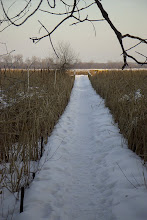A case in point is seen in the civic dialogue regarding the replacement of the central library in Madison, Wisconsin. Two designs have been suggested by developers who would like to make the new library the principal tenant in a larger downtown development.
Both designs provide the space required for the facility. One is probably better than the other with regard to access and walkability, but both are downtown and consistent with the area's mass, scale and density. I haven't seen the energy budgets for the two designs but I would imagine that both could be constructed to meet high efficiency standards.
The issue for both proposals concerns the fourth aspect of the lens - aesthetics. When you gaze at the rendering of either of these structures, you are neither captivated nor inspired. There is nothing memorable about either design.

I lived in Salt Lake City when the new City Library was designed and constructed. Pictured here, the City Library was designed by Moshe Safdie, an architect from Boston with previous library design experience. It was such a pleasant surprise to see Safdie's creative design statement gain acceptance and then earn support from the community. Once constructed, the library received accolades and awards. The building is both functional and memorable. I've attended lectures and meetings, seen films, worked on projects, found books and enjoyed a cup of coffee while sitting in the entrance gallery just enjoying the space, light and views.

Salt Lake did not miss the opportunity to create a civic institution and edifice that would serve the needs of the community in multiple ways. When I look at the renderings of the two proposals for a similar facility in Madison, my impression is that they both represent opportunity lost. While the proposals are similar in the way that they respond to location, urbanism and performance factors, they both fall flat when it comes to creating a memorable central library. Please judge for yourself - you can view the renderings via links on the Madison Public Library Web site.








No comments:
Post a Comment